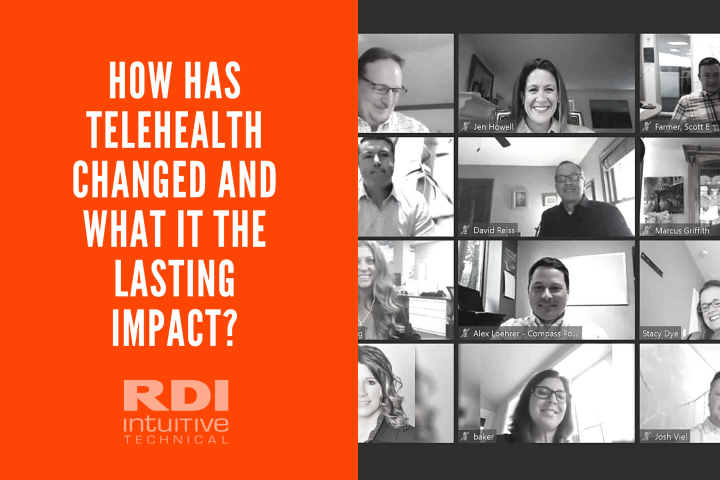COVID-19 has shifted a lot of outpatient visits to virtual visits or telehealth. However, how did the pandemic impact patient interactions? Today, as we return back to a level of business as usual, still screening for COVID and directing patients to the correct clinics, over 50% of total appointments are now telehealth visits.
“It was like we woke up one day and it was completely different. Across our 2,000 sites of care, we have about 67,000 employees across the ministry. So it really was like night and day. From a patient access perspective, we had on our roadmap for 2020 to really look at how we introduce virtual care, virtual care options, but we really wanted to remain in the driver’s seat to drive that initiative ourselves. But as we got into the midst of COVID, the environment and our patients pushed us immediately into the virtual space. So we had to address our 2,200 providers to make sure they had equipment that could handle MyChart or eVisits. But literally in about nine days, when we were looking day over day, we saw about a 306% increase of our appointments going virtually. Then month to month, we were up a little over 5,000%.” – Scott Farmer, System Director, Bon Secours Mercy Health
LISTEN TO TELEHEATH PODCAST
https://rdicorp.com/biz-over-brews-winning-smart-with-telehealth
RDI interviewed healthcare leaders from behavioral health, FQHC, and additional specialties to get their inside scoop on how COVID-19 has impacted patient engagement and how they are helping their patients master the skill of audio/video telehealth.
Patient Care & Behavioral Health Embrace Telehealth
Behavioral health patient interactions have been tremendously impacted. Lots of clients every week in the behavioral health space see very high acuity clients. These are clients who are dealing with issues of addiction, self-harm, suicidality, and eating disorders, among other things. But it’s the highest acuity that you can see in the outpatient environment.
For that reason, for a long time, many providers didn’t want to embrace teletherapy. It was in the plans but then COVID happened. The platform was the last thing that was standardized for most. But all the pre-planning work was done to be able to see clients virtually.
“On March 16th, although we were an essential business, according to the state of Ohio, we shut down our” offices and converted all—at the time about, 850—clients to virtual appointments. In the first week, we saw 30% of our normal volume, and we didn’t know whether to do backflips or to cry. In the end, it was more backflips. Because what we found was, thanks to the willingness of insurance carriers to allow for this, of our providers to deliver this care on this platform, and of our clients to embrace it as well, people were able to continue receiving really important care during this period.” – Alex Loehrer – Chief Operating Officer, Compass Point
Behavior healthcare providers see clients generally every week, and it’s different from the physical healthcare environment where they see somebody and then don’t see them again until they get sick. Behavioral health patients are involved in an ongoing relationship. For many of them, telehealth was an absolute blessing. Many behavioral health providers pivoted during this time to expand their practice due to some exceptions related to COVID and insurance reimbursement and credentialing in particular.
Healthcare Staff Remained In-office
Most staff remained in-office during the pandemic but with about 90% in-person visits across the system, most providers were faced with multiple complexities. Honoring social distancing with offices and waiting rooms presented challenging accommodations. Some patients are still COVID scared, which they rightfully should be, and are wanting the remote visit.
Hybrid Telehealth
Staff are in the offices and trying to manage hybrid. They have an obligation to register and room patients, and then at the same time, help coordinate the call for those patients that are doing televisits. It’s very complex that teams felt the challenges.
Offices are now returning to business as usual but there are some complexities like calling to say a patient is in the parking lot. Then staff are actually going to get the patients, do their temperature, and walk them directly to the clinical room. Providers could not allow any patients to congregate in some waiting rooms. But one of the things that providers were doing was to determine, based upon the visit types, what could be seen or required to be in-person, versus virtually appropriate? When scheduling, providers offered virtually options.
Virtual Telehealth Visit Scheduling
Some providers conducted virtual visits, and some of them created blocks on their schedules. For example, some providers had half-day blocks on Monday, Wednesday, and Friday. Some of them come into the office and would go into the office and do the virtual visits, while others just stayed at home and did the virtual visits remotely. Then there were some providers that just refused to see anything virtually, so they required everything to be in-person.
As providers were scheduling, through medical group guidance and CDC guidance, they were screening patients to determine if they had COVID symptoms or had been around someone where there could be potential exposure to COVID. If that was the case, that person or that patient was not able to go to an in-person visit; they were either routed to outdoor healthcare clinics, or their visit was scheduled virtually. It may not have necessarily been with that patient’s provider of record, but an alternate that that provider really recommended.
Patients Still Want In-Person Care
What we’re finding, however, is patients still want to be seen in person. Approximately, 70% of behavioral health visits embraced teletherapy for the long term, whereas prior to March 16, 2020, it was 0%. But ultimately, people want to see a doctor or a therapist, whether they’re an existing client or a new client, and they want to see somebody in person.
For more information about healthcare operations & strategy, contact us today!
#Healthcare
Chuck Hutchings
Director of Healthcare Operations & Strategy
